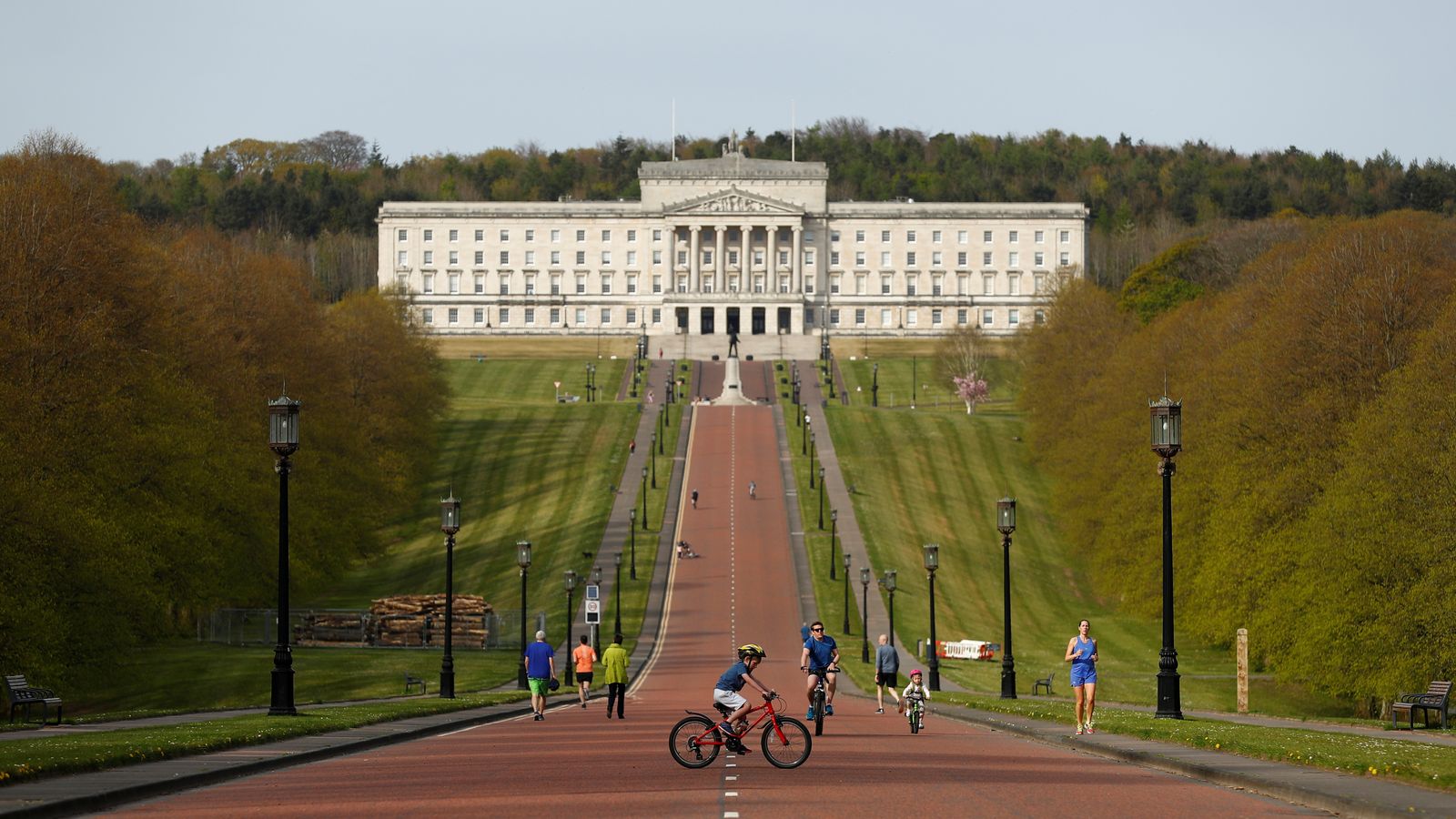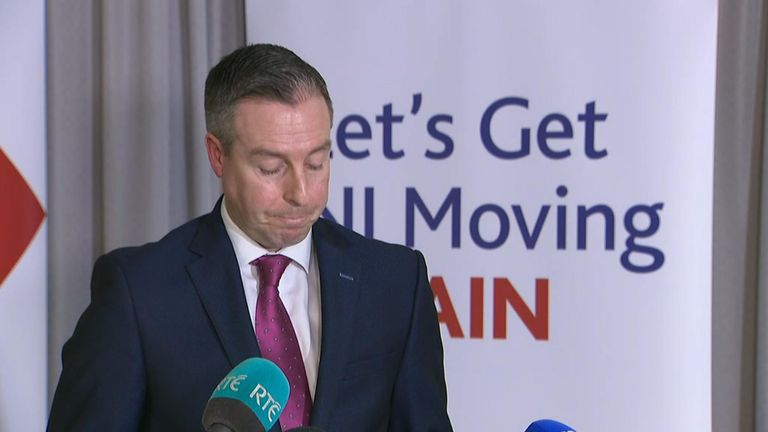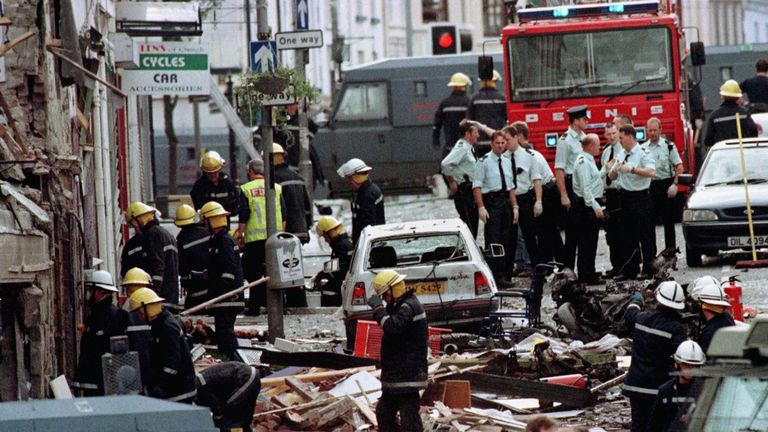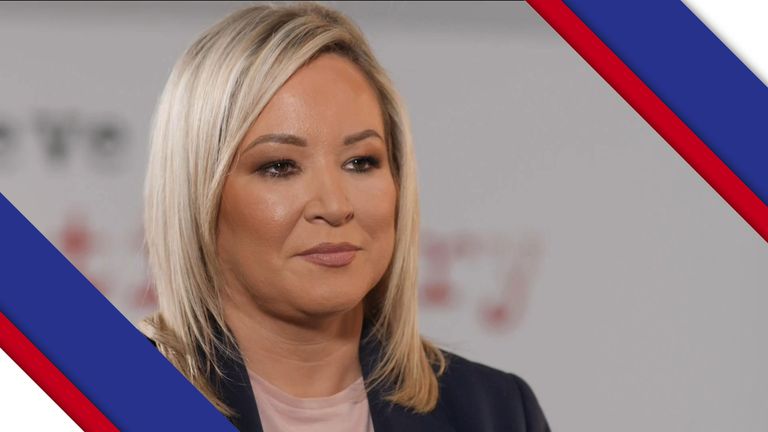Northern Ireland has a different type of governance from the rest of the UK in response to decades of conflict within the country.
The country operates under a power-sharing model devised as part of the Good Friday Agreement, but it requires a fine balancing act to make it work.
The arrangement has collapsed a number of times, with the most recent case lasting two years over a dispute about the region’s post-Brexit trading arrangements.
However, there has now been a breakthrough, with the UK government saying “all conditions” are in place for power-sharing to be restored.
What is power-sharing?
Unlike an agreed coalition, where at least two parties agree to govern together to form a government (like Britain’s Conservative-Lib Dem coalition from 2010-15), it is mandatory for Northern Ireland‘s political parties to share power.
It is based on a consociational model of democracy developed by Dutch-American political scientist Arend Lijphart for democratic societies emerging from conflict, or with the potential for conflict.
Switzerland, Belgium, Israel and Lebanon also have consociational systems.
How does power-sharing work in Northern Ireland?
There must be representatives from both nationalist parties, who want Irish unity, and unionists, who want Northern Ireland to remain part of the UK.
The Northern Ireland Executive is made up of the first and deputy first ministers and their cabinet.
One of the top jobs at Stormont (the parliament buildings) must be unionist and one nationalist, with equal powers, and one cannot be in position without the other. So, when the DUP’s Paul Givan resigned as first minister in February, Sinn Fein’s Michelle O’Neill also had to step down.
The multi-party executive – cabinet – is also made up of nationalist and unionist parties, with the DUP (unionist) and Sinn Fein (nationalist) being the two largest at the moment.
A process called the d’Hondt system determines the proportion of unionist and nationalist ministers appointed to the executive, based on the number of seats a party wins in the election.
The Department of Justice is an exception, with that minister elected by a cross-community vote so is supported by both unionists and nationalists.
So far, a unionist party has always been the largest party so the first minister has always been unionist.
Read more:
Sinn Fein deputy leader urges Irish government to prepare for a united Ireland
Under the d’Hondt system, a party can exclude itself from the executive committee and its seats can be re-distributed under the same formula.
The system is also used to allocate chairs and deputy chairs of committees within Stormont.
Certain decisions also require cross-community support, including the election of the speaker and deputy speakers, and budget allocations. The petition of concern is a controversial mechanism triggering a cross-community vote if a party can secure 30 signatures.
Why does Northern Ireland have power-sharing?
Northern Ireland was created in 1921 when the island of Ireland was split in two.
The Troubles, which started in the late 1960s, saw violence erupt between the minority Catholics, who wanted to leave the UK, and the majority Protestants who wanted to remain part of the UK.
In 1998 the Good Friday Agreement (or Belfast Agreement) was signed, ending The Troubles and establishing the legislature Northern Ireland has today.
Power-sharing was chosen as the method of governance so that there is fair representation from both unionist and nationalist parties.
Has power-sharing worked well for Northern Ireland?
Since the first Northern Ireland Assembly elections in June 1998, Stormont has faced many ups and downs but has endured.
It has been suspended five times due to disagreements between unionists and nationalists, including a three-month suspension in 2000 and two 24-hour periods in 2001.
But the longest suspension was from 2002 to 2007 after unionist parties withdrew from the executive when Sinn Fein’s Stormont offices were raided by police investigating allegations of intelligence gathering on behalf of the IRA by party support staff.
The UK government took over and in 2006 the St Andrews Agreement was signed, allowing for a transitional assembly to help prepare to restore the government.
This eventually happened in 2007 with DUP leader Ian Paisley as first minister and Sinn Fein’s chief negotiator, Martin McGuinness, as deputy.
The assembly was again suspended from 2017 to 2020 after Mr McGuinness resigned over the “cash for ash scandal” – a failed renewable energy incentive scheme that reportedly cost taxpayers almost £500m.
During that time, Westminster passed Northern Ireland’s budget, repeatedly extended the deadline for an executive to be formed and amended a bill to legalise same-sex marriage and liberalise abortion.
The assembly resumed shortly before Brexit in 2020, but a year later the DUP threatened to bring it down over the Brexit deal – the Northern Ireland Protocol – which has effectively placed a border in the Irish Sea.
They did not bring down the assembly then, but in February 2022, Mr Givan resigned in protest over the Brexit checks, so the assembly collapsed yet again.
‘Conditions in place’ to restore power-sharing
There has been no functioning Northern Ireland Assembly since then, with Rishi Sunak’s Windsor Framework – the deal to tackle issues caused by the Protocol – failing to satisfy the DUP.
However, on 30 January 2024, nearly two years after the assembly last collapsed, the UK government said it believes “all the conditions are now in place” for a return of power-sharing, following a deal with the DUP.
At the time of writing, Northern Ireland Secretary Chris Heaton Harris was unable to give any details of the deal, saying he would publish it in parliament when “all-party talks are finalised”.
Asked by Sky News what had changed, and whether there were going to be fewer checks on goods going from Great Britain to Northern Ireland, the minister replied: “There are some significant changes, but you’ll have to wait until the package is… well, not the package is finalised, but the all-party talks are finalised.
“And when I publish the deal in parliament, everyone will see what it is.”




